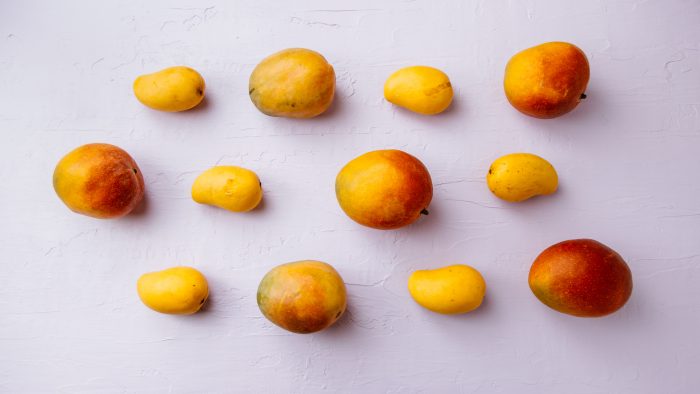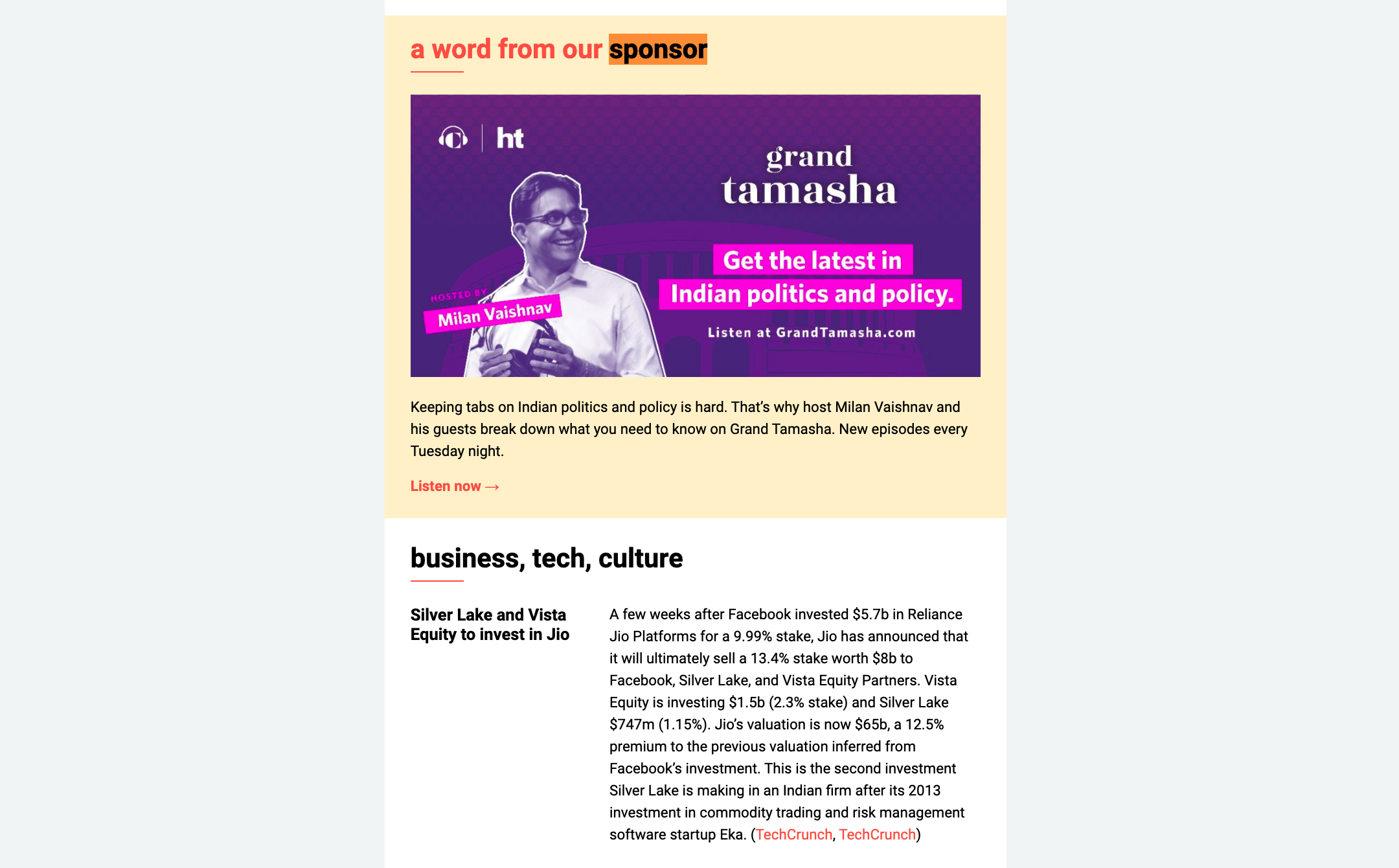
Snigdha Sur always wanted to be a journalist.
Growing up Indian American in New York City, she was an avid reader who craved stories about South Asia and other South Asians like her, but those stories were hard to come by. She was valedictorian of her class at Stuyvesant High School and graduated as editor-in-chief of the school’s newspaper, The Spectator. At Yale, she double-majored in economics and South Asian studies.
After Yale, she focused on learning about media businesses. She moved to India to work for a Bollywood production company and later returned to the United States to work for consulting firm McKinsey. In that time, she consulted for news outlets, from Scroll India to BuzzFeed, and learned about their business.
“So much was advertising-based that it was leading to certain incentives that weren’t working,” Sur said. “It was also leading to an over-reliance on Facebook to promote stories instead of thinking about how to build your own audience and build your own community.”
But it was as an MBA candidate at Harvard Business School that the wheels started turning about founding her own news organization. She interned with Otter Media and worked with brands like Reese Witherspoon’s Hello Sunshine. Sur noticed that these brands were successful because they targeted specific demographics whose needs weren’t being met. Sur wanted to start the publication she never had: one that covers South Asia and the South Asian diaspora.
“The fastest growing demographic in America right now is Asian Americans and, more specifically, South Asian Americans,” she said. “But when you look at the media coverage that we have, it’s disproportionately low.”
South Asia includes India, Pakistan, Bangladesh, Sri Lanka, Nepal, Bhutan, and the Maldives (some also include Afghanistan and Myanmar). The diaspora refers to anyone of South Asian descent or heritage living outside of their country of origin. According to 2018 American Community Survey data, there are approximately 5.7 million South Asians living in the United States alone.
As lots of media companies start these days, Sur started out with a weekly newsletter originally titled InkMango that curated stories about South Asia and South Asians. She interviewed friends and journalists about what they wanted in a South Asian-focused publication. After a few months, she founded The Juggernaut in October 2018 and officially launched February 2019 with a hard paywall.
The Juggernaut broadly covers business, politics, technology, and culture as it relates to South Asians. Stories include the rise of the Indian-origin CEO, the history of Ismaili Muslims in Pakistan, and recognizing the South Asian frontline workers in New York City during the pandemic, to name a few. It publishes one story per weekday and a weekly newsletter on Sundays to recap the past week’s events and stories.
Currently Sur and senior editor Vignesh Ramachandran are the only two full-time staffers. The majority of stories are written by freelancers around the world.
A recent story about how “newsrooms are still too white” included this editor’s note:
At The Juggernaut, we’re not perfect but we actively try to do better every day. Our editorial leadership is 100% non-white. Our freelance journalists are from diverse backgrounds across over 12 countries: more than 90% are people of color and over 80% identify as female.
Off the bat, it was important to Sur to launch with multiple revenue streams. The Juggernaut was a member of the 2019 Y Combinator cohort and was granted $150,000 in seed funding. It offers three subscription options: a lifetime membership ($250), annual membership ($52.13), or monthly membership ($9.99/month). A subscription guarantees full access to all of the The Juggernaut’s stories and free or discounted access to its events. Sur wouldn’t share the exact number of paid subscribers, but confirmed that it was in the thousands.
While in-person events have been paused because of coronavirus, in the past The Juggernaut hosted a discussion on the future of South Asian food in the United States and a Bollywood trivia night. Now it hosts Instagram Live interviews for free.
The Juggernaut doesn’t rely on advertising. Instead, it’s testing out partnerships to sponsor the newsletter. A a recent partnership with the Carnegie Foundation looks like this:

The free newsletters are one of the ways the organization approaches community engagement. Subscribers are, of course, important to any publication, but so is convincing new readers to invest. Features to come include a comments sections on stories (to further facilitate conversations) and a private Facebook group, Sur said.
The Juggernaut’s Instagram account also has 34,000 followers.
“That’s a very accessible platform where people in this community are,” Ramachandran said. “We’ve been thinking about engaging right with the core subscribers, but also talking to people who are just generally in the community or people who might be potential subscribers to The Juggernaut.”
South Asian community news publications have existed in the United States for decades now. Newspapers like India Abroad (The Juggernaut wrote about it folding here), Urdu Times, and the Weekly Bangalee are a sampling of the publications just in New York City that were born to serve their immigrant audiences living in the United States. But for first generation South Asian Americans like Sur and Ramachandran (and me, a Pakistani American), those publications can be inaccessible if you can’t read the language fluently. The stories in them also might not be representative or relevant to those who aren’t immigrants. The Juggernaut tries to publish a range of stories — from pieces about anti-blackness to buying Indian mangoes in the West — that will resonate with generations of South Asians.
“A lot of our work has been providing context to things that are maybe like throwaway lines in mainstream news sources,” Ramachandran said. “There’s a lot of talk about essential workers during COVID, and when you think about the South Asian American community, you think about a lot of doctors on the front lines. But we were able to peel back and say there’s a lot of other front liners and essential workers, from taxi drivers, to shopkeeper owners, to community organizers, that are really on the front lines of these news events that you’re hearing about. These are things that impact our community and we want to give like that wider context to what you might initially assume or hear.”
Both Sur and Ramachandran spend one day a week just on calls with subscribers to learn more about what they like, don’t like, and what they’d like to see more of. They also spend time talking to people who cancelled their subscriptions to learn about what moved them to that decision.
“One of the most exciting things to me is the audience engagement component and how it can fuel our reporting,” Ramachandran said. “We had a call-out about faith and how first generation, second generation, and third generation [South Asians] are thinking about faith in their own lives. These are just great opportunities to ask people who maybe never have been asked or given a platform to share their thoughts or concerns about a number of issues.”